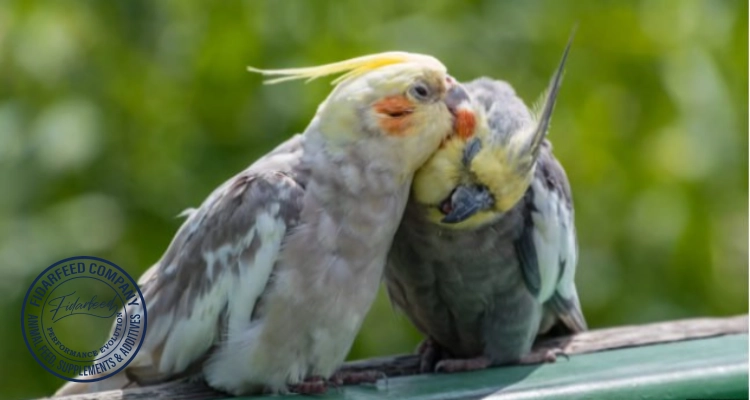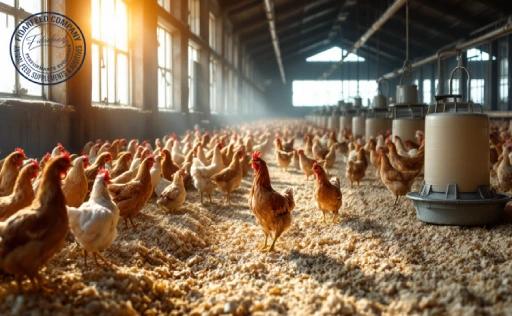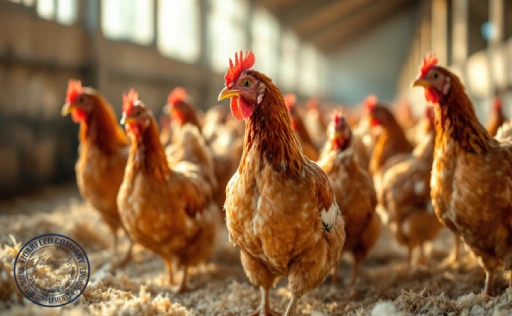Why a Perfect Habitat Matters for Breeding Pet Birds
Breeding pet birds is an exciting and rewarding experience, but success depends heavily on the environment you create. A well-designed habitat directly impacts their health, reproductive success, and overall well-being.
Birds need a space that mimics their natural habitat, reducing stress and encouraging breeding behavior. If their surroundings are inadequate too small, too noisy, or lacking essential elements they may struggle to breed or even develop health issues. A perfect habitat ensures a safe, comfortable, and nurturing environment, ultimately leading to healthier chicks and happier birds.
Choosing the Right Cage: Size, Shape, and Placement
The right cage plays a fundamental role in breeding. It should be spacious enough to allow birds to move freely, stretch their wings, and establish territories. A rectangular or wider cage is often preferable over round cages, as it provides a sense of security.
The placement of the cage is equally important position it in a quiet, well-ventilated area away from direct drafts or excessive noise.
Learn more about: Probiotic Supplements
If breeding multiple pairs, avoid overcrowding, as this can lead to stress and aggressive behavior. Opt for sturdy, non-toxic materials, and ensure easy access for cleaning and maintenance.
Ideal Temperature and Humidity for Successful Bird Breeding
Temperature and humidity levels significantly impact breeding. Most pet birds thrive in temperatures between 65–80°F (18–27°C).
Extreme fluctuations can stress birds and hinder successful egg-laying. Humidity is just as crucial keeping it around 50–60% prevents dehydration and aids proper eggshell formation.
Learn more about: Probiotic Caged Birds: The Key to a Healthier Companion
If the air is too dry, eggs may not hatch properly. A small humidifier or regular misting can help maintain optimal conditions, particularly in dry climates.
Lighting and Natural Daylight Cycles: A Key Factor in Bird Reproduction
Light exposure influences hormonal cycles and breeding readiness. Birds rely on natural daylight cycles to regulate their internal clocks. Ideally, they should receive 10–12 hours of light per day.
In areas with limited natural sunlight, full-spectrum artificial lighting can be used to replicate daylight conditions. Avoid exposing birds to artificial light at night, as it can disrupt their natural rhythms.
Learn more about: Why Is My Bird Plucking Its Feathers? Top Mental and Health Reasons
Keeping a consistent light-dark schedule helps maintain their health and encourages successful reproduction.
Nesting Essentials: Providing the Best Nesting Material and Boxes
A well-prepared nesting area encourages birds to breed comfortably. Choose nesting boxes that match the species’ needs some prefer enclosed spaces, while others require open nests. Line the nest with soft, safe materials like coconut fiber, shredded paper, or untreated wood shavings.
Learn more about: Home Breeding Success: 10 Expert Tips for Cockatiel Care
Avoid synthetic or chemically treated materials, as these can be harmful. Ensure the nesting area is secluded and free from disturbances, as excessive stress can lead to abandoned eggs or poor chick development.
The Best Diet for Breeding Pet Birds: Nutrition and Supplements
A well-balanced diet is essential for breeding success. Breeding birds need higher amounts of protein, calcium, and vitamins to support egg production and chick growth. Include a variety of foods such as:
- High-quality pellets and seeds
- Fresh fruits and vegetables (e.g., carrots, apples, spinach)
Learn more about: Synbiotic Supplement for Birds
- Protein sources like boiled eggs, mealworms, or sprouted seeds
- Calcium supplements (cuttlebone or crushed eggshells) to strengthen eggshells Hydration is equally crucial—always provide fresh, clean water. Nutritional deficiencies can lead to weak chicks, poor hatch rates, or even reproductive issues in parent birds.
Ensuring Safety for Breeding Pet Birds: Keeping the Habitat Free from Stress and Predators
A stress-free environment is vital for breeding success. Birds are highly sensitive to disturbances, so minimize loud noises, sudden movements, or frequent handling during the breeding period.
If housed outdoors, ensure cages are secure from predators like cats, rats, or larger birds.
Learn more about: How to Treat Arthritis in Chickens: Key Strategies for Healthier Breeder Birds
Using mesh covers or positioning cages at a safe height can prevent unwanted intrusions. Additionally, avoid placing cages near strong-smelling household chemicals, as birds have delicate respiratory systems.
Encouraging Natural Mating Behavior in Breeding Pet Birds
To promote successful breeding, birds must feel secure and comfortable. Some species require social interaction before mating, while others need visual and physical bonding over time.
Providing perches at different heights, allowing courtship displays, and ensuring a peaceful environment can improve pairing success. Some birds respond positively to background sounds of nature, mimicking their natural habitats. Avoid rushing the process—forcing birds to mate can lead to stress and aggression.
Monitoring and Caring for Breeding Pet Bird Eggs: Tips for a Healthy Hatch Rate
Once eggs are laid, careful monitoring is required to ensure a high hatch rate. Check nests regularly without disturbing the parents too much.
Ensure the nesting environment remains warm and humid to prevent eggs from drying out. If parents are inexperienced or neglecting their eggs, artificial incubation may be necessary.
Learn more about: The Significance of Feed Additives in Animal Nutrition
Be cautious of egg-binding, a condition where a female struggles to lay eggs due to calcium deficiency or stress. If any complications arise, consult an avian veterinarian.
Raising Breeding Pet Bird Chicks: How to Provide the Best Start in Life
Newly hatched chicks are delicate and require close attention. Ensure the parents are feeding them adequately; if not, hand-feeding with a specialized formula may be needed.
Maintain a warm environment (85–90°F or 29–32°C) for the first few weeks.
Learn more about: Want a Healthy Pet Bird? Try Probiotics
As they grow, introduce soft foods like mashed fruits or moistened pellets before transitioning to a standard diet. Socialization is crucial handle chicks gently to help them become comfortable around humans, especially if they will be kept as pets.
Conclusion
Creating the perfect habitat for breeding pet birds is a blend of science and care. From choosing the right cage and ensuring optimal environmental conditions to providing proper nutrition and safety, every detail matters. A well-prepared habitat not only increases breeding success but also ensures the health and happiness of both parent birds and their offspring. Whether you are an experienced breeder or just starting, implementing these best practices will set the stage for successful bird breeding.
Have questions or insights to share? Drop a comment below—we’d love to hear about your experiences with breeding pet birds!








